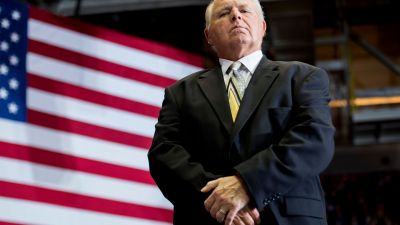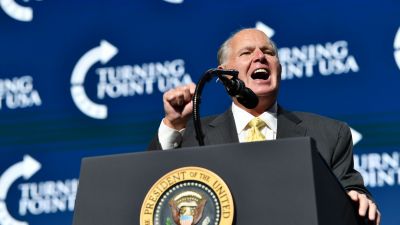
New York Times graphic, March 22, 2017.
Page A13 of the print edition of the March 27 New York Times carries a tantalizing if equivocal headline: “Is the Military Big Enough?” The article takes up a whole page, half of which is a graphic representing the numbers of tactical aircraft (3,476), attack helicopters (760), “unmanned aerial vehicles,” aka drones (637), bombers (157), and so on.
The subject is extraordinarily important, and the Times’ reporting is a good start, but still, the graphic and the headline skirt the thrust of the text, which questions, however imperfectly, what such vast expenditures are supposed to accomplish. The full page screams: Important! Unfortunately, the text goes on to mumble. Indeed, with American armed forces in harm’s way in God knows how many countries, it’s startling how spotty the paper’s coverage of military matters is.
But let’s start with congratulations where congratulations are due. Reporting on the scale of the swollen Pentagon budget, and on its beneficiaries and notional purposes, is a worthy and necessary endeavor. Simply by devoting space to the topic, The Times leaps ahead of its competitors. And as this full page acknowledges, mind-dazzling numbers in the billions, let alone trillions, need unpacking to make them graspable. The Times text begins by alerting the reader as follows:
President Trump has proposed a $54 billion increase in defense spending, which he said would be “one of the largest increases in national defense spending in American history.”
The Times article, credited to four authors — K.K. Rebecca Lai, Troy Griggs, Max Fisher and Audrey Carlsen — quickly goes on to make an important point:
Past administrations have increased military spending, but typically to fulfill a specific mission. Jimmy Carter expanded operations in the Persian Gulf. Ronald Reagan pursued an arms race with the Soviet Union, and George W. Bush waged wars in Iraq and Afghanistan.
Mr. Trump has not articulated a new mission that would require a military spending increase. This has left analysts wondering what goals he has in mind. Erin M. Simpson, a national security consultant, called Mr. Trump’s plans “a budget in search of a strategy.”
Indeed, this is so sharply said that Erin M. Simpson’s phrase would be the making of an arresting headline in itself: “A Budget in Search of a Strategy?”
But look what happens next. Starting with an anodyne headline, then lurching over to a striking but underplayed truth (“Mr. Trump has not articulated… left analysts wondering what goals he has in mind”), the article drifts into mincing words: Mr. Trump’s announcements appear to “emphasize optics as much as strategy….” “Appears” to emphasize optics “as much as” strategy — though there’s no evidence that there is any strategy here at all.
The article proceeds to waver between blurs (like “appear to emphasize optics”) and straightforward statements about the incoherence of the Trump regime.
In the blur category is this: “…it is difficult to know what problem Mr. Trump is trying to address by adding 100 fighter aircraft.” Difficult to know? How about impossible?
In the straightforward category is this:
“The general concept of readiness often happens without a conversation about what the forces are for,” said Benjamin H. Friedman, a research fellow at the libertarian Cato Institute in Washington. “They don’t know exactly what they want to do, except that they want a bigger military.”
Even here, “They don’t know exactly” has the mealy taste of euphemism. On the strength of the evidence in the piece, the authors of the piece would be warranted to say simply: They don’t know.
So what’s going on with the uneven tone? My guess is that the unsteadiness is the product of too many editors wielding too many blue pencils to muffle what ought to be its straightforward import, which is to say: Trump’s proposed military budget has no detectable relation to a strategy.
In other words, for all that The Times knows that noisemaker-in-chief Donald Trump is unhinged, illogical and often enough downright incoherent, what might have been a resounding article about monumentally expensive boondoggles has strangled itself into fuzz. It’s self-muffling.
Hasn’t The Times learned yet that what Trump says is less important than what he does? What the regime does is largely what its departments and agencies do. That would be so whoever the president is, but in particular, the smoke-and-mirrors reign of Donald Trump cries for the closest and steadiest reporting. The scrutiny of The New York Times is essential. Where the Times goes, other outlets tend to follow. When The Times is distracted by the lie of the day, so is the competition.
So it is not surprising, but not helpful, when a search of The Washington Post, ABC News, CBS News, CNN, Fox News and NBC News websites shows that none of them has covered the mismatch between military purposes and the proposed budget.
Enough with euphemisms, then. With American armed forces at work in dozens of countries, there’s need for the closest of scrutiny — not only of budgets, not only of actions, but of strategy. When is the last time we saw a review of American military strategy vis-à-vis Iraq, Iran, al-Qaida, ISIS and elsewhere?
On this note, it’s striking that gallons of ink have been recently spilled on the far-right connections of former Breitbart editor, Steve Bannon crony and National Security Council Strategic Initiatives Group member Sebastian Gorka, while the major media have been oblivious to the banality and sheer emptiness of his supposedly masterful writings on counterinsurgency; for example, this.
Daniel Nexon of Foreign Policy magazine reported on how lousy Gorka’s scholarship is, but in keeping with the major media’s general disdain for ideas as such, none of the major outlets picked up and elaborated that work. If Bannon and Gorka are Trump’s brains, that tells you a lot.
And as for what the US military is actually up to, no one is connecting the dots. A snippet of Iraq reports here, a snippet of Syria there — that’s all we get. The media are not composing the details into a bigger picture. It’s left to Sen. Chris Murphy (D-CT), a member of the Senate Foreign Relations Committee, to remind us, in The Huffington Post, that the Pentagon does not pause. Murphy, a smart man rapidly distinguishing himself for his integrity, has been sounding alarms which have not cracked through to our major news outlets. At least his hometown Hartford Courant picked up his Huffington Post piece and ran it as an op-ed:
President Trump has been busy dramatically expanding the American troop presence inside Syria. And virtually no one in Washington has noticed. Americans have a right to know what Trump is planning and whether this will lead to an Iraq-style occupation of Syria for years to come.
Without any official notification, Trump sent 500 new American troops into Syria, ostensibly to take part in the upcoming assault on the ISIS stronghold of Raqqa. News reports suggest this deployment may just be the tip of the iceberg, with some saying that the plan is for hundreds more American troops to be added to the fight in the coming weeks. No one actually knows how many troops are inside Syria now, because the administration has largely tried to keep the build-up a secret….
…I believe we are destined to repeat the mistakes of the Iraq War if we try to force political stability simply through the barrel of a gun. I would urge my colleagues who have not focused on the question of US troop presence in Syria to, at the very least, demand the administration answer two basic questions before signing off on the money to fund this dangerous escalation.
First, what is our mission and what is our exit strategy?
When America’s Senate is fortunate enough to have made room an intelligent fellow asking out loud what needs to be asked on matters of life and death, trying to do the people’s business, doesn’t he deserve some unmuffled public attention? Yet, so far as I can make out, the 43-year-old Murphy has not appeared on a Sunday chat show, or been noticed in media outside his home state, even though, the last I looked, Connecticut forms part of the New York metropolitan area.
Take note, New York Times. Attention must be paid — unmuffled and unapologetic attention. As long as you are going to be damned as “the opposition party,” get on with it.




